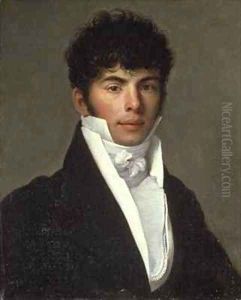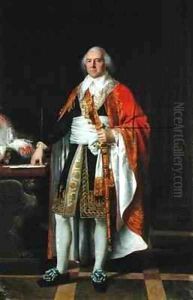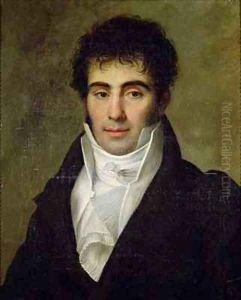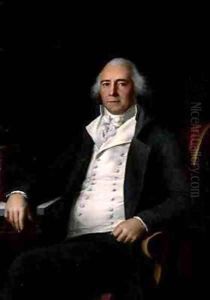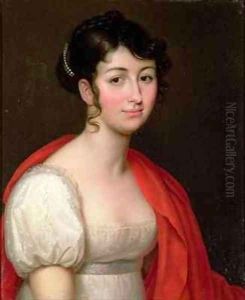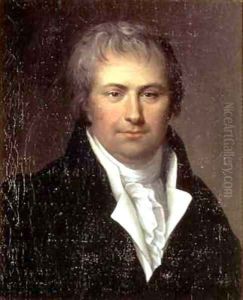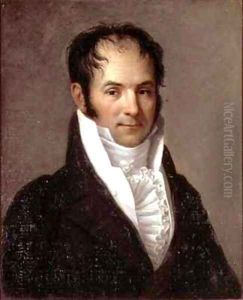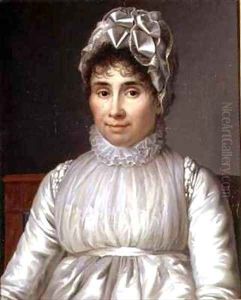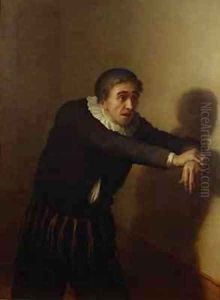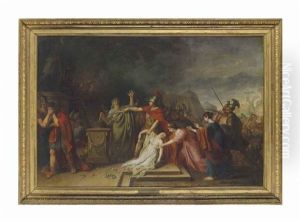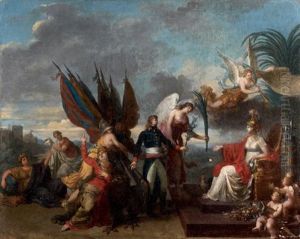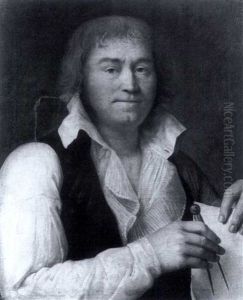Jean Baptiste Francois Desoria Paintings
Jean Baptiste François Desoria was a French artist known primarily for his portraits and historical scenes. Born in 1758, Desoria lived through a tumultuous period in French history which encompassed the French Revolution, the Napoleonic Wars, and the restoration of the monarchy.
He began his artistic training under Jacques-Louis David, the preeminent French painter of the time. Under David's tutelage, Desoria developed a strong foundation in the neoclassical style, which emphasized clarity of form, sober colors, and the ideals of classical antiquity. This training would influence his work throughout his career.
Despite his association with David, Desoria did not achieve the same level of fame as his master. Nevertheless, he enjoyed a successful career. His portraits were well-regarded, and he was known for his ability to capture the character and elegance of his subjects. In addition to portraits, Desoria also painted historical and mythological scenes. These works were characterized by their fine detail, historical accuracy, and often conveyed moral or political messages that were pertinent to the times.
During the French Revolution, the art world was deeply affected by the political upheaval. Many artists, including Desoria, found it necessary to navigate the changing political landscapes carefully. Desoria, like many of his contemporaries, had to adapt his artistic subjects and styles to suit the tastes and ideologies of the various regimes that came to power during and after the Revolution.
Desoria continued to work and exhibit his art throughout the early 19th century. However, the rise of Romanticism, which began to take hold in the early 1800s, signaled a shift away from the Neoclassical style. Romantic artists favored emotion, individualism, and the sublime, which were in stark contrast to the rational and ordered approach of Neoclassicism. This shift in taste may have contributed to Desoria's declining prominence towards the latter part of his career.
Jean Baptiste François Desoria passed away in 1832. While he may not be as well-remembered as some of his peers, his contributions to French art during a period of significant social and political change remain noteworthy. His works can be viewed in context as part of the rich tapestry of Neoclassical art that sought to capture both the aesthetic ideals and the tumultuous events of its time.
